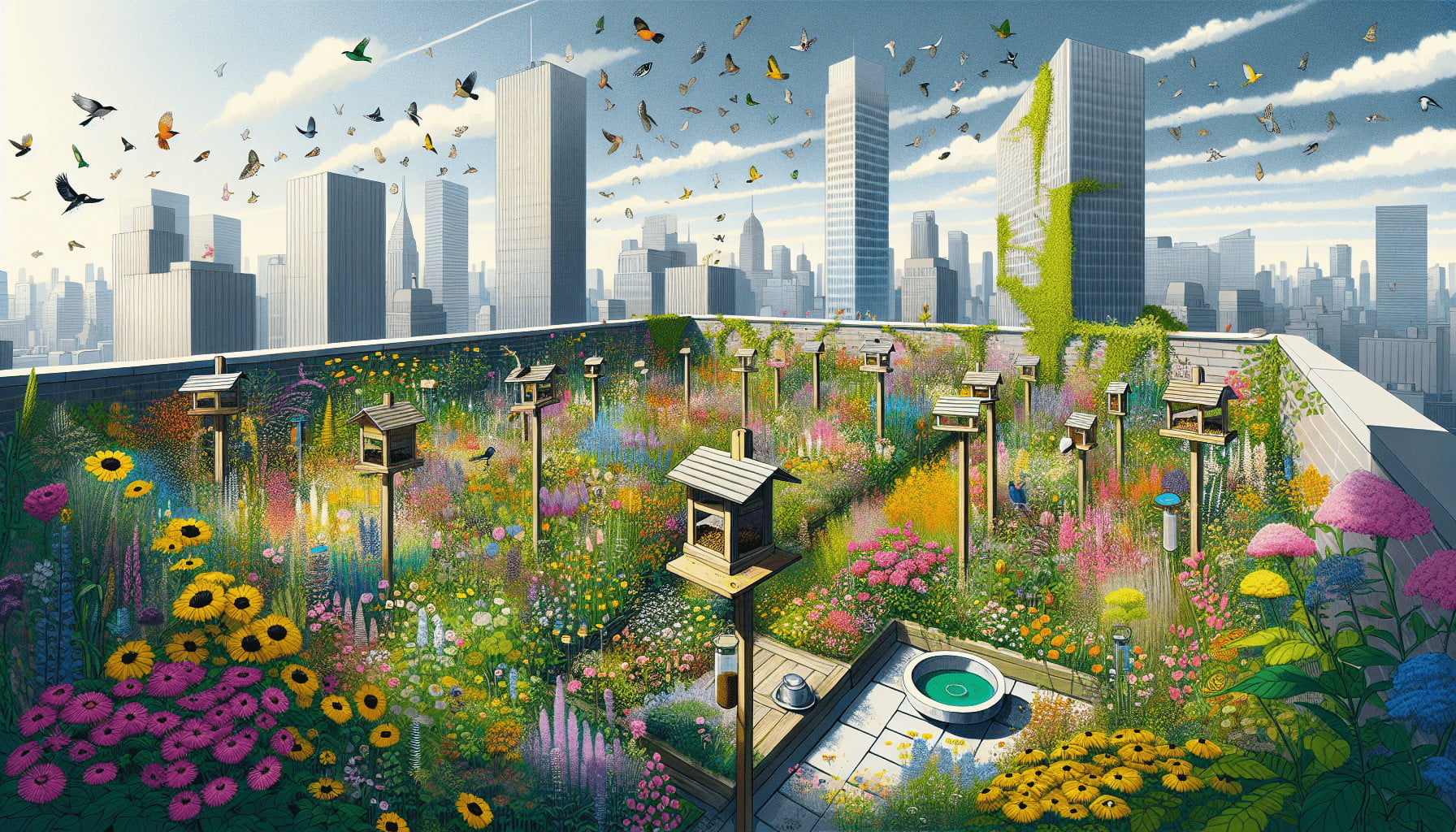Tips for Creating a Rooftop Garden that Attracts Wildlife
If you are looking to add some greenery to your rooftop space while also attracting some wildlife, you’ve come to the right place! Creating a rooftop garden that appeals to birds, bees, butterflies, and other creatures can be a rewarding experience. Here are some tips to help you get started on your rooftop wildlife oasis.

Assess Your Rooftop Space
Before you start planning your rooftop garden, take some time to assess your space. Consider factors such as the amount of sunlight your rooftop receives, the strength of the wind in your area, and the weight capacity of your rooftop. Understanding these factors will help you determine what types of plants will thrive in your rooftop garden.
It’s important to be realistic about what you can achieve in your rooftop garden. Consider how much time and effort you are willing to put into maintaining your garden. Start with a small area and gradually expand as you become more comfortable with rooftop gardening.
Choose Native Plants
When selecting plants for your rooftop garden, opt for native species whenever possible. Native plants are well-adapted to the local climate and soil conditions, making them more likely to thrive in your rooftop garden. Additionally, native plants provide food and habitat for local wildlife, helping to attract bees, butterflies, birds, and other creatures to your rooftop garden.
Consider creating a mix of flowering plants, shrubs, grasses, and trees to provide a diverse range of habitats for wildlife. Choose plants with different bloom times to ensure that there is always a source of food for wildlife throughout the year.
Provide Water Sources
Water is essential for attracting wildlife to your rooftop garden. Consider adding a bird bath, small pond, or shallow dish of water to provide a source of hydration for birds, butterflies, and other creatures. Be sure to change the water regularly to prevent the growth of mosquitoes and other pests.
Incorporating water features into your rooftop garden can also create a soothing and tranquil environment for you to enjoy. The sound of running water can help mask city noise and create a peaceful retreat in the heart of the urban jungle.
Create Shelter
In addition to food and water, wildlife also need shelter to thrive in your rooftop garden. Provide nesting boxes, birdhouses, and other shelter options to attract birds, bees, and other creatures to your rooftop oasis. Consider planting dense shrubs, creating brush piles, or installing trellises for climbing plants to provide additional shelter for wildlife.
Shelter options can also help create a sense of privacy and seclusion in your rooftop garden. By providing shelter for wildlife, you can create a balanced ecosystem that benefits both the creatures that visit your garden and the plants that call it home.

Avoid Chemicals
When creating a rooftop garden that attracts wildlife, it’s important to avoid using chemicals such as pesticides, herbicides, and synthetic fertilizers. These chemicals can be harmful to wildlife and may disrupt the delicate balance of your rooftop ecosystem. Instead, opt for organic and natural gardening practices to promote a healthy environment for wildlife.
Organic gardening practices such as composting, mulching, and companion planting can help control pests and enrich the soil in your rooftop garden. By working with nature rather than against it, you can create a sustainable and wildlife-friendly rooftop garden.
Maintain Your Garden
Just like any other garden, a rooftop garden requires regular maintenance to thrive and attract wildlife. Be sure to water your plants regularly, remove weeds, and prune or deadhead flowers as needed. Monitor your garden for signs of pests or diseases, and take steps to address any issues before they get out of hand.
In addition to regular maintenance, take some time to observe the wildlife that visits your rooftop garden. Keep a journal of the birds, bees, butterflies, and other creatures that you see, and note their behaviors and preferences. By understanding the needs of the wildlife in your rooftop garden, you can make adjustments to better attract and support them.
Conclusion
Creating a rooftop garden that attracts wildlife can be a fun and rewarding project. By following these tips, you can transform your rooftop space into a vibrant oasis that provides food, water, shelter, and a safe haven for birds, bees, butterflies, and other creatures. With some careful planning and a little bit of effort, you can create a rooftop garden that not only benefits wildlife but also enhances your own enjoyment of your outdoor space. So grab your gardening gloves and get started on your rooftop wildlife oasis today!
